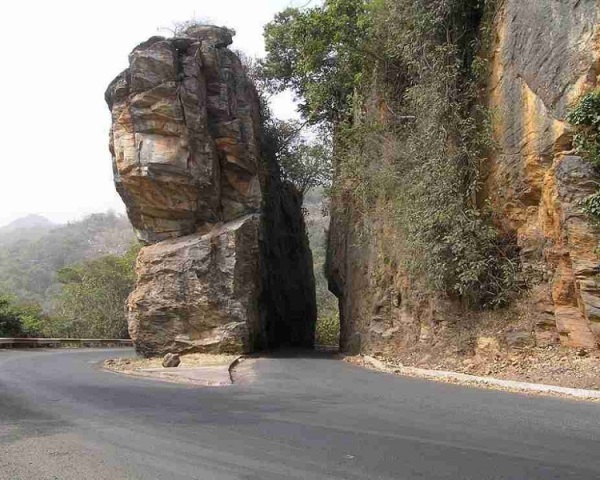Today, Togo is governed under the constitution of 1992. Read on to know some interesting and fun facts about Togo.
Facts About Togo
Togo, officially known as The Togolese Republic, is a West African nation, bordered by Benin in the east, Ghana in the west, Burkina Faso in the north, and a short coast of Atlantic Ocean in the south. Additionally, it shares its coastline with the Gulf of Guinea in the south, offering lagoons and tropical beaches thus, attracting a significant number of tourists from across the globe. Spread over 56,785 sq. km of area, this long narrow strip of land called Togo consists of plateaus in the south, low coastal plains with extensive lagoons and marshes, graduating to hills in the center and rolling savannas in the north. Although it is one of the smallest countries on Earth, Togo is a paradise for eco-tourism with 17% of the land covered with lush forests. Togo was also a former German colony before it was conquered by Anglo-French forces during World War 1. Go through this thought-provoking article to explore more interesting and fun facts about Togo in the following lines.

Image: Raphaël V.@flickr
Fast Facts
Continent: Africa
Area: 56,785 km2
Capital: Lome
Population: 6,154,813 (2011)
Official Language: French
Independence Day: April 27, 1960
Type Of Government: Republic
Interesting & Fun Facts About Togo
- The capital of Togo is Lome.
- The main currency of Togo is CFA (Communaute Financiere Africaine), commonly known as Franc.
- Sokode, Kpalimé, Atakpame, and Bassari and some other important cities in Togo, apart from the capital city.
- 61% of Togolese are literate.
- About 51% Togolese has indigenous beliefs, 29% follow Christianity and 20% Islam.
- A typical Togo breakfast usually comprises of porridge called ‘aklui zogbon’, which is eaten with a doughnut-like ball called ‘botoquoin’. Lunch consists of chicken/fish with rice balls and tomato sauce, popularly known as ‘akoemhe’.
- Did you know that education in Togo was compulsory only for six years? This is mainly because of teacher shortages and poor infrastructure.
- The official language of Togo is French. Ewe, Mina, Kabye, and Dagomba are other African local languages spoken.
- The highest point in Togo is Mount Agou, standing at 986 meters, while the lowest point is at sea level at the Atlantic Ocean.
- About 99% of the entire population is native African with over 37 different tribes. The largest amongst them are Ewe, Mina, and Kabre. The rest 1% population constitutes Europeans and Syrian-Lebanese.
- Over 65% of the population depends on commercial and subsistence agriculture for their living. Amongst them, cocoa, coffee, and cotton make up to 40% of the nation’s earnings.
- The main food crops are corn, yams, cassava, beans, millet, rice and sorghum.
- Interestingly, Togo is the fourth largest producer of phosphate in the world.
- The country’s rich bio-diversity lies in the wildlife sanctuaries, the Keran National Park and the Fazao & Malkasa Natural reserve. These natural parks are a wonderful to watch crocodiles, monkeys, lions, hyenas, and other wild animals and seabirds in their natural habitat.
- The exotic birds residing in the country include sparrows, drongos, and grebes.
- Togo’s coastal area was a part of the Western African “Slave Coast” that was governed by the Germans. The British, Danes, and French followed in ruling Togo at different eras.
- In 1960, The Togolese Republic attained independence from the French rule.
- Togo is divided into 5 major regions, namely, Savanes, Kara, Centrale, Plateaux, and Maritime. These are further sub-categorized into 30 prefectures and 1 commune.
- Did you know that Benjamin Kudjow Thomas Boukpeti holds the record of wining Togo’s first medal ever? This dual Togolese-French citizenship holder won a bronze medal in the K1 slalom kayak event at Beijing Olympics in 2008.
- Togo is located very close to the equator and thus, experiences tropical hot and humid climate in the central regions and the south and dry, arid weather towards the north.
- More than 32% of the population lies below poverty line.
- The National Legislature of Togo consists of 81 Deputies.
See also
More from iloveindia.com
- Home Remedies | Ayurveda | Vastu | Yoga | Feng Shui | Tattoos | Fitness | Garden | Nutrition | Parenting | Bikes | Cars | Baby Care | Indian Weddings | Festivals | Party ideas | Horoscope 2015 | Pets | Finance | Figures of Speech | Hotels in India : Delhi | Hyderabad | Chennai | Mumbai | Kolkata | Bangalore | Ahmedabad | Jaipur
- Contact Us Careers Disclaimer Privacy Policy Advertise With Us Lifestyle Sitemap Copyright iloveindia.com. All Rights Reserved.







